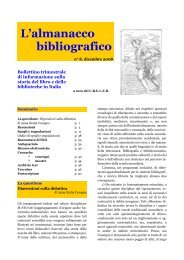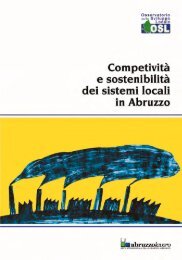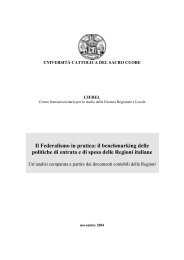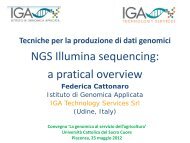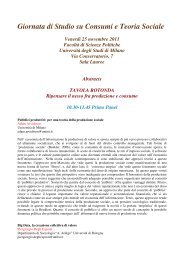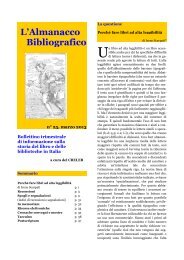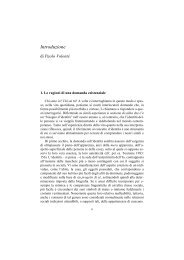ENTI LOCALI E SVILUPPO SOSTENIBILE - Centri di Ricerca
ENTI LOCALI E SVILUPPO SOSTENIBILE - Centri di Ricerca
ENTI LOCALI E SVILUPPO SOSTENIBILE - Centri di Ricerca
You also want an ePaper? Increase the reach of your titles
YUMPU automatically turns print PDFs into web optimized ePapers that Google loves.
1 CHE COS’E’ LO <strong>SVILUPPO</strong> <strong>SOSTENIBILE</strong>? UNA SURVEY DELLA<br />
LETTERATURA ED UNA DEFINIZIONE OPERATIVA<br />
Sostenibilità e Sviluppo sostenibile sono termini ormai entrati a far parte del<br />
linguaggio comune, non solo degli economisti e dei policy maker. Il loro significato è<br />
tuttavia molto complesso, pieno <strong>di</strong> sfaccettature e merita <strong>di</strong> essere approfon<strong>di</strong>to, nel<br />
momento in cui <strong>di</strong>ventano obiettivi, che si decida <strong>di</strong> perseguire con appropriate azioni<br />
concrete.<br />
Lo scopo <strong>di</strong> questo capitolo è <strong>di</strong> ricostruire, sia pure a gran<strong>di</strong> linee, la storia e<br />
l’origine <strong>di</strong> questi termini e la loro evoluzione nel corso del tempo, un’operazione<br />
quanto mai opportuna, per non incorrere nel rischio ben messo in evidenza da<br />
O’Riordan [1988], quando scrive che “it may only be a matter of time before the<br />
metaphor of sustainability becames so abused as to be meaningless”. O, ancora, con le<br />
parole <strong>di</strong> Tolba [1987]: “Sustainable development has become an article of faith, a<br />
shibboleth: often used but little explained. Does it amount to a strategy? Does it apply<br />
only to renewable resources? What does the term actually mean?”<br />
1.1 Le tre <strong>di</strong>mensioni dello sviluppo sostenibile<br />
Gli stu<strong>di</strong>osi interessati al problema hanno prodotto decine <strong>di</strong> definizioni (ad<br />
esempio, Pezzey [1992] ne in<strong>di</strong>ca 50), delle quali si <strong>di</strong>scutono qui le più significative,<br />
che meglio mettono in evidenza la complessità del problema.<br />
Secondo Boa<strong>di</strong> [2002], il termine sviluppo sostenibile fu coniato, a metà degli<br />
anni Settanta, da Barbara Ward, fondatrice dell’IIED (International Institute for<br />
Environment and Development). Sempre in quegli anni, nel modello <strong>di</strong> Bariloche 1<br />
(Herrera et al.[1976] e Chichilnisky [1977]), si sottolineava che “… underdeveloped<br />
countries cannot advance by retracing the steps of developed countries … it would<br />
imply reapiting those errors that have lead to deterioration ok the environment … The<br />
solution must be based on the cretion of a society intrinsically compatible with its<br />
environment”. In una raccolta <strong>di</strong> definizioni, Murcott [1997] ne riporta alcune del 1979-<br />
80:<br />
a. “The sustainable society is one that lives within the self-perpetuating limits<br />
of its environment. That society … is not a no growth society … It is rather, a<br />
society that recognizes the limits of the growth… and looks for alternative<br />
ways of growing” (Coomer [1979])<br />
1 Nel modello <strong>di</strong> Bariloche oltre alla <strong>di</strong>namica dei fattori produttivi, della produzione e del consumo,<br />
viene stu<strong>di</strong>ata anche la relazione tra crescita della popolazione e consumo <strong>di</strong> basic goods. Un sentiero <strong>di</strong><br />
crescita ottimale dovrebbe garantire che i bisogni primari siano sempre sod<strong>di</strong>sfatti, che tutta la<br />
popolazione possa godere <strong>di</strong> standard minimi <strong>di</strong> qualità della vita.<br />
1



